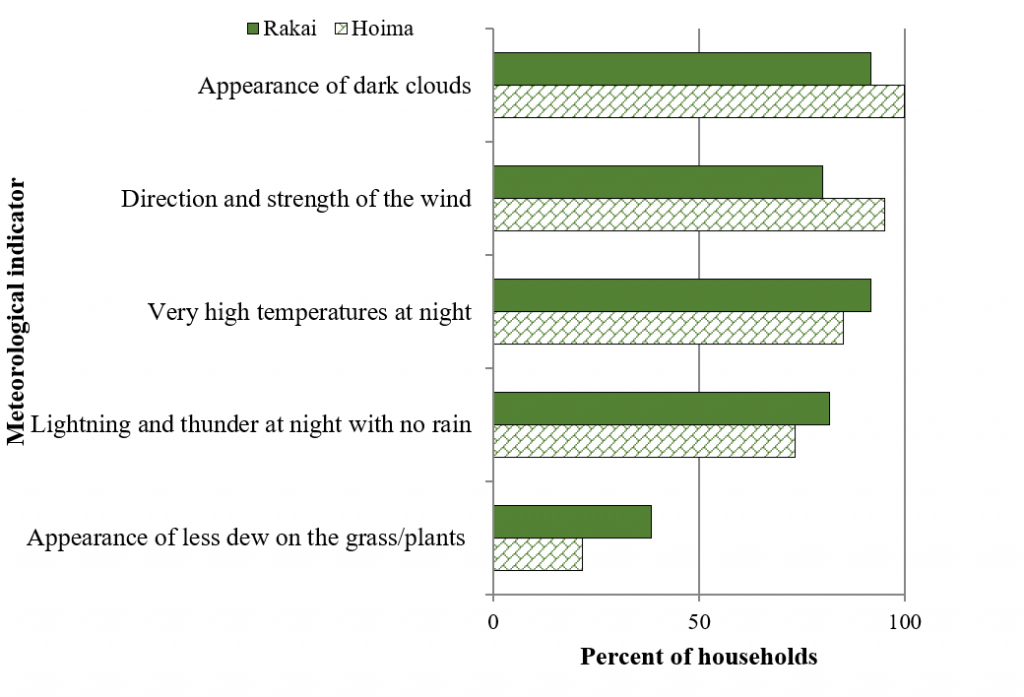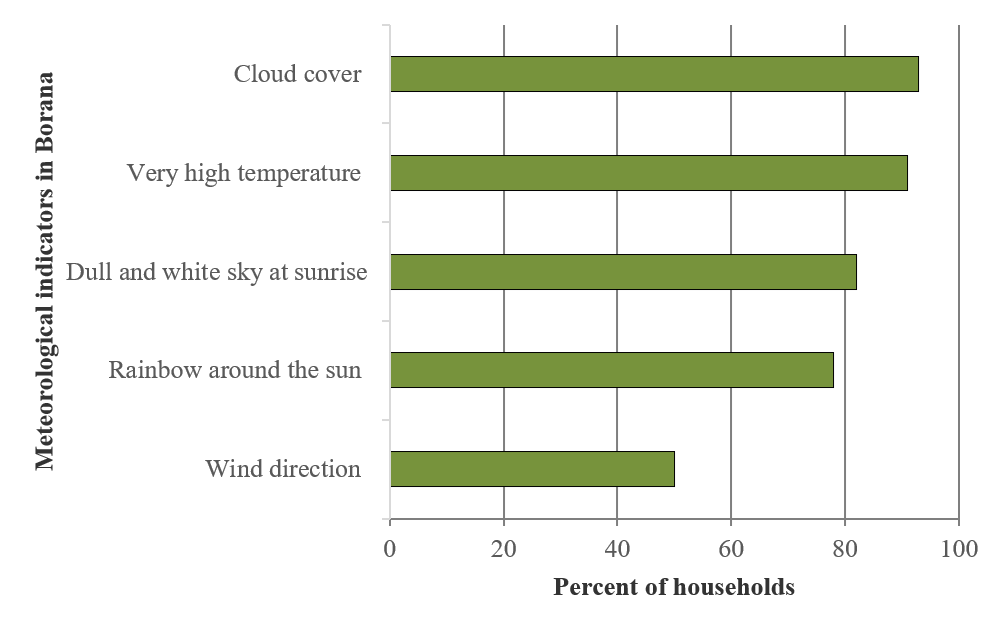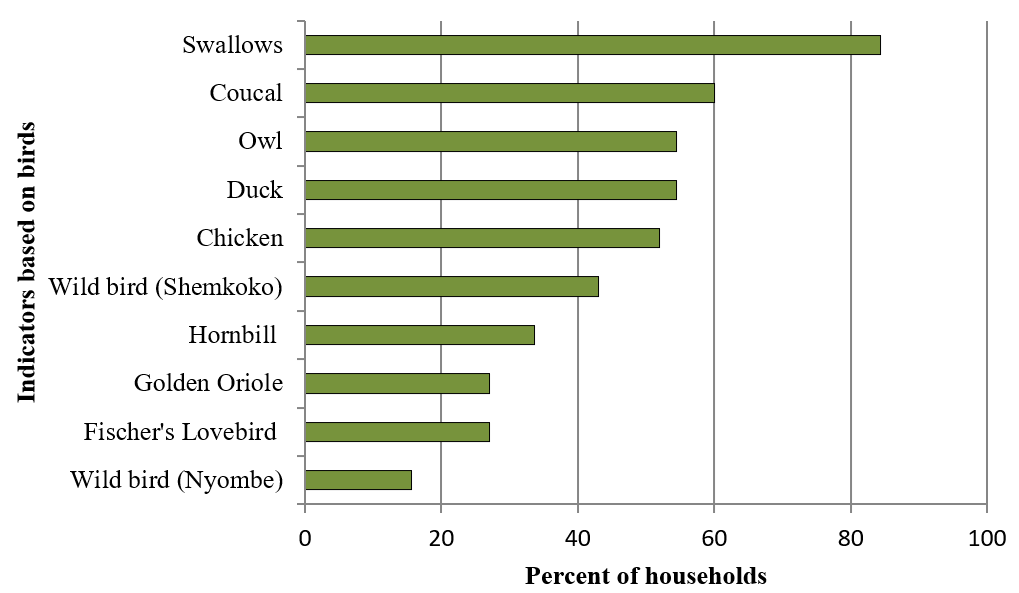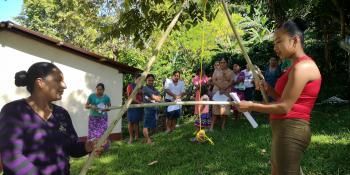Indigenous knowledge in weather forecasting: Lessons to build climate resilience in East Africa
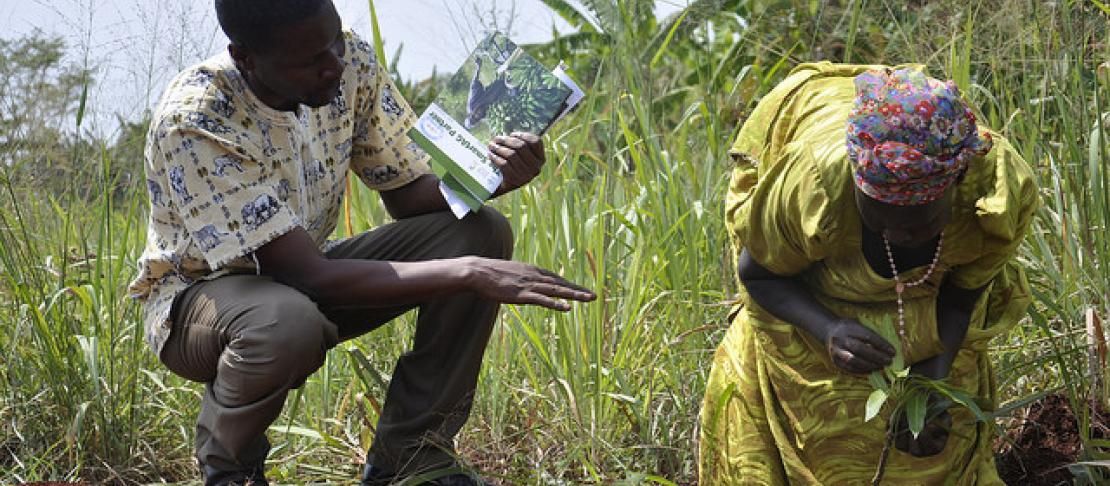
Farmers and pastoralists across East Africa use a combination of meteorological, biological and astrological indicators to predict weather and to make important agricultural production decisions.
It is increasingly emerging that the provision of context-specific and user-friendly weather forecasting information determines the resilience of farmers and pastoralists to variability and climate change. In East Africa, provision of local specific, reliable, timely and user-friendly modern weather information services that effectively addresses the needs of farmers and pastoralists are limited. Farmers and pastoralists depend mainly on indigenous weather forecasting practices to inform their agricultural and pastoral practices and decisions.
Ayal Desalegn from Addis Ababa University recently presented case studies by the CGIAR Research Program on Climate Change, Agriculture and Food Security (CCAFS) of weather forecasting practices and lessons across East Africa—Ethiopia (Borana and Afar), Uganda (Hoima, Rakai and Bahima) and Tanzania (Lushoto)—at the United Nations Educational, Scientific and Cultural Organization (UNESCO) event titled 'Dialogue between indigenous and scientific knowledge on weather and climate: enhancing pastoralists’ adaptation to climate change in Africa'. The event created an opportunity for indigenous and scientific experts to discuss how to integrate their knowledge on weather and climate. This is especially critical for pastoralists whose livelihoods are intrinsically determined by weather and climate conditions. The case studies presented by Ayal highlighted existing indigenous knowledge in weather forecasting practices, including the major sources of climate information for farmers and pastoralists across East Africa. A key finding from the case studies is that farmers and pastoralists trust and are responsive to indigenous weather forecasting sources.
Types and sources of climate information
Farmers and pastoralists across East Africa access different types of weather information. These include onset of rainfall, duration of the cropping season, expected rainfall amount and distribution, cessation of rainfall and severity of weather events (occurrence of strong winds and floods). Indigenous sources (indigenous knowledge experts, elders and their own observations), radio, exchanges with other people (relatives, friends, neighbors) and service providers (NGOs, researchers, extension workers) were the most common sources of weather information.
Different indicators for different communities
Farmers and pastoralists in East Africa have relied on the indigenous weather prediction methods for generations. According to the studies presented by Ayal, the great majority of farmers and pastoralists particularly in Ethiopia's Afar and Borana sites depend heavily on indigenous weather information compared to Tanzania and Uganda. Different weather forecasting indicators are used across the region.
Meteorological and astrological indigenous weather forecasting indicators include direction and strength of winds, star-moon alignment, apparent movement of stars, direction of the moon crescent, types of clouds, temperature conditions, lightning and thunder, color of the sky, and rainbow to forecast the next rainy season. In Uganda, indigenous knowledge forecasters associate the onset of rainfall with the appearance of clouds. The appearance of nimbostratus and cumulonimbus clouds indicates a high probability of rainfall. While in Ethiopia, the appearance of white feather like column (vertically standing) cloud in the sky is an indication that the rain is about come. A sky dominantly covered with light cloud indicates drought. Astrological indicators were more pronounced among pastoralists.
Meteorological indicators used to predict onset of rain in Hoima and Rakai (Uganda)
Meteorological indicators used to forecast timing and distribution of rainfall in Borana (Ethiopia)
Biological indicators focus on the behavior and activities of domestic and wild animals, insects and different species of plants for weather forecasting. For instance, in Uganda, the Mvule tree indicates onset of the rainy season. While in Ethiopia, the intestines of cattle, sheep and goats are used to forecast about the magnitude, severity, and duration of drought, drought-affected places, disease outbreak, the prospect of peace, and/or conflict. In Tanzania, the occurrence of large flocks of swallows and swans, roaming from the South to the North during the months of September to November, is an indication of onset of short rains.
Biotic indicators based on birds in Lushoto (Tanzania)
Lessons learned
Different indigenous weather forecasting indicators have varying levels of acceptance depending on their precision. For instance, star-moon alignment is the most dependable weather information sources in Borana, while cloud color is the preferred indicator in Hoima and Rakai sites. The challenges facing indigenous knowledge weather forecasting include insufficient documentation of the knowledge and a poor knowledge transfer system, lack of coordinated research to investigate its accuracy and reliability, death of forecast experts, and influence of religion and modern education.
Indigenous knowledge plays a major role in local livelihoods and is crucial to supporting local efforts to forecast and make sense of seasonal climate situation at local level. However, progressive loss of indigenous knowledge threatens the ability of pastoralists and farmers to cope with and adapt to climate change. The challenge ahead is finding ways of integrating indigenous weather forecasting with the scientific weather forecasting systems.
Read more:
- Blog: Integrating indigenous knowledge with scientific forecasts in Lushoto, Tanzania
- Blog: Time for an exit strategy to traditional climate forecasting?
- Working paper: Mahoo H, Mbungu W, Yonah I, Recha J, Radeny M, Kimeli P, Kinyangi J. 2015. Integrating Indigenous Knowledge with Scientific Seasonal Forecasts for Climate Risk Management in Lushoto District in Tanzania. CCAFS Working Paper no. 103. Copenhagen, Denmark: CGIAR Research Program on Climate Change, Agriculture and Food Security (CCAFS).
Ayal Desalegn work at Addis Ababa University.
Maren Radeny is Science Officer and Catherine Mungai is Partnerships and Policy Specialist at CCAFS East Africa.

